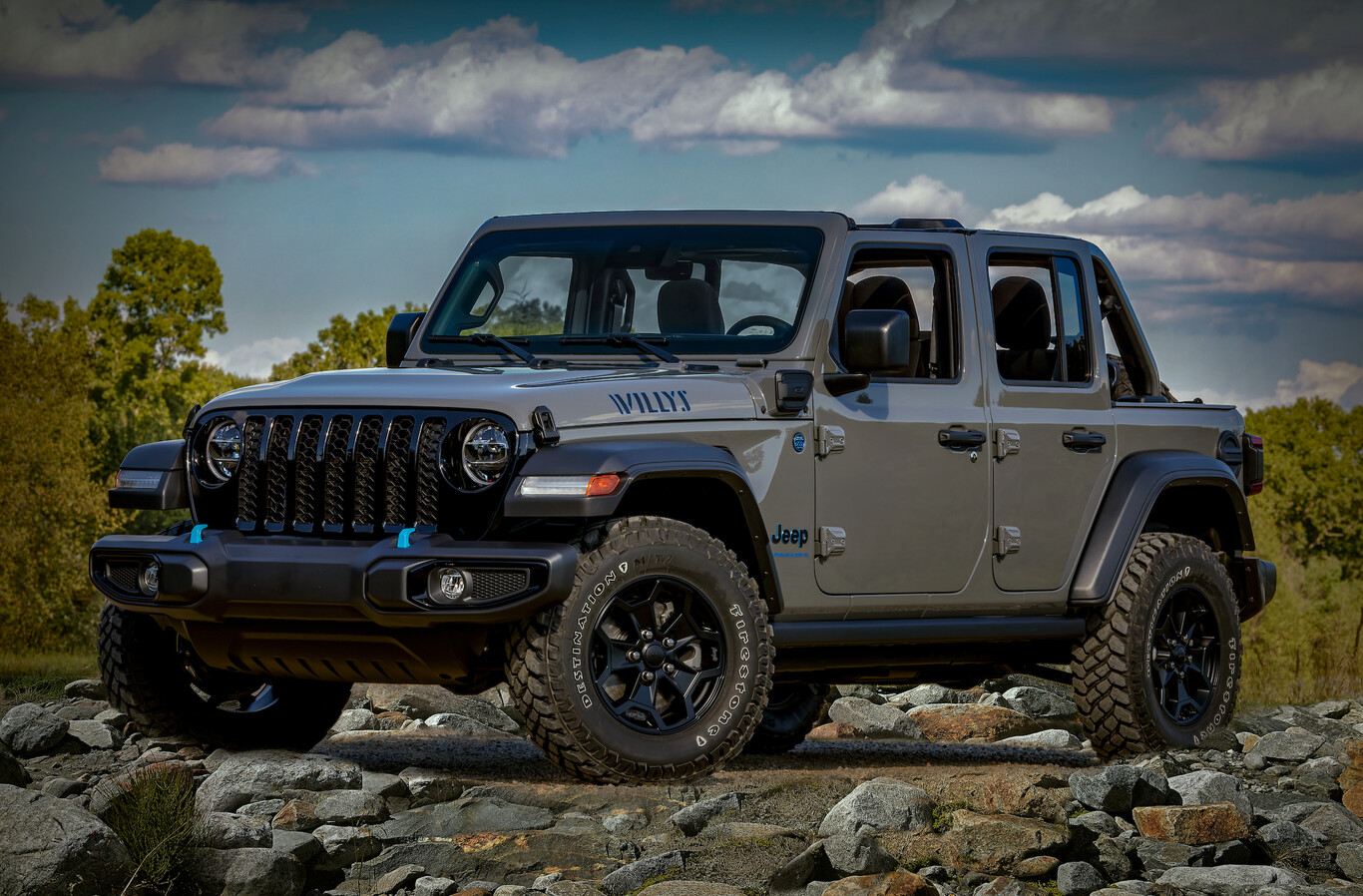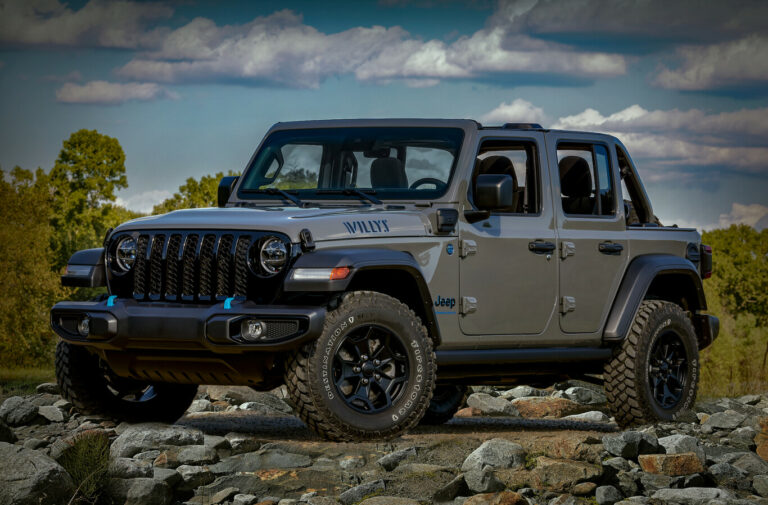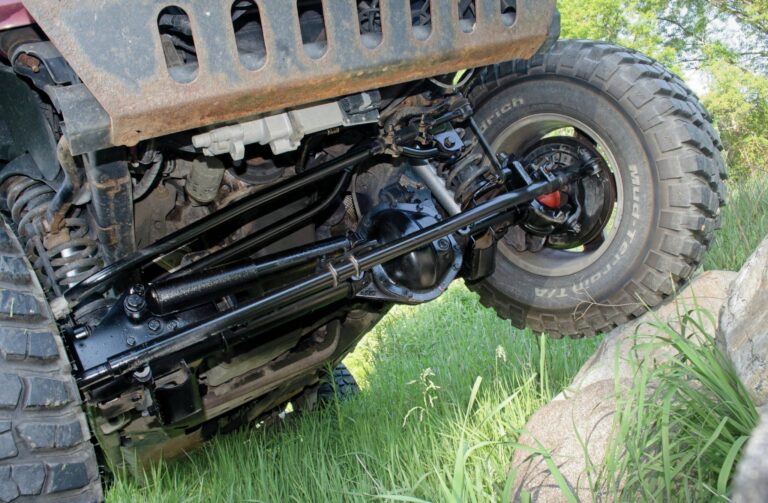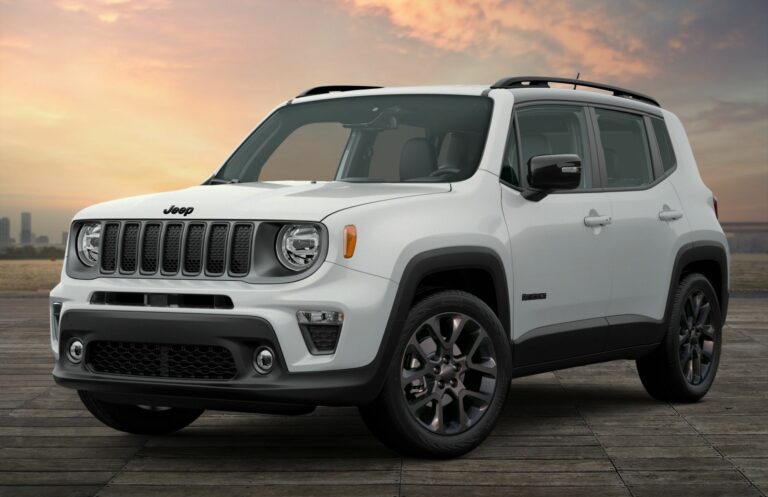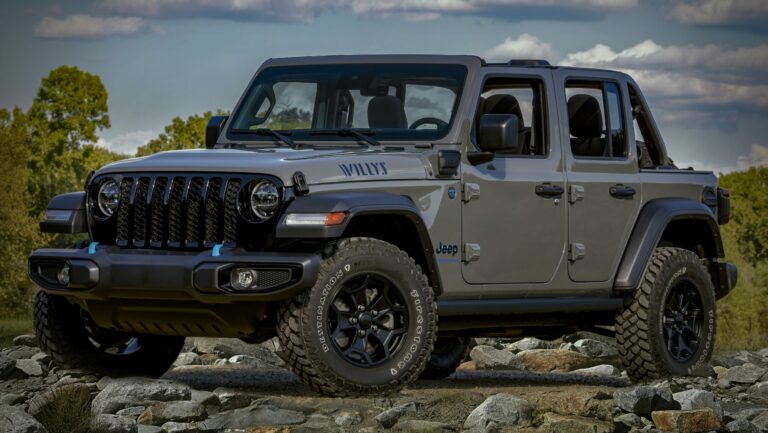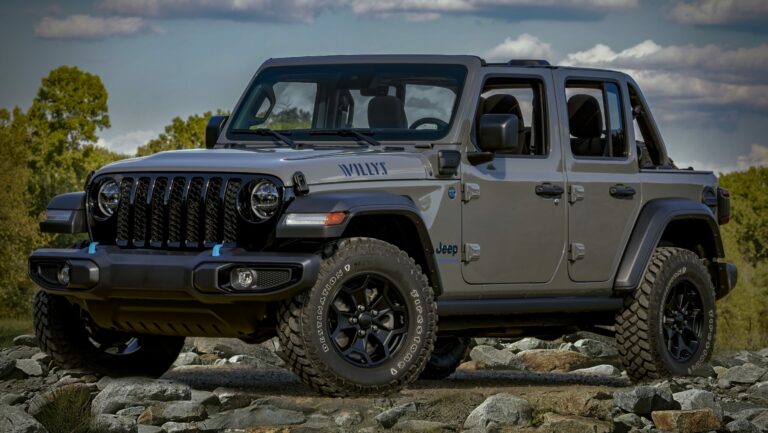Jeep Grand Cherokee 6 Cylinder For Sale: A Comprehensive Buyer’s Guide
Jeep Grand Cherokee 6 Cylinder For Sale: A Comprehensive Buyer’s Guide jeeps.truckstrend.com
The Jeep Grand Cherokee stands as an enduring icon in the SUV landscape, celebrated for its blend of rugged capability, comfortable interiors, and sophisticated styling. For many prospective buyers, the prospect of owning a Grand Cherokee often brings up the question of engine choice. While the powerful V8 options certainly have their allure, the 6-cylinder variants consistently emerge as a smart, balanced, and highly sought-after choice in the used vehicle market. This comprehensive guide is designed to illuminate every facet of purchasing a "Jeep Grand Cherokee 6 Cylinder For Sale," offering insights, advice, and practical considerations to help you make an informed decision.
Why Choose a 6-Cylinder Grand Cherokee? The Perfect Balance
Jeep Grand Cherokee 6 Cylinder For Sale: A Comprehensive Buyer’s Guide
Opting for a 6-cylinder Jeep Grand Cherokee often represents a sweet spot for many drivers, striking an excellent balance between performance, efficiency, and cost of ownership.
- Balanced Power and Efficiency: While a V8 offers more raw power, the V6 engines in the Grand Cherokee are remarkably capable. The most common modern V6, the 3.6L Pentastar, delivers ample horsepower and torque for daily driving, highway cruising, and even respectable towing (typically up to 6,200 lbs). Crucially, it achieves significantly better fuel economy compared to its V8 counterparts, translating to lower running costs over time.
- Reliability and Maintenance: Generally, 6-cylinder engines are less complex than V8s, potentially leading to lower maintenance costs and fewer common issues over their lifespan. The Pentastar V6, in particular, has a strong reputation for durability when properly maintained, making it a reliable choice for a used vehicle.
- Affordability: Both new and used, 6-cylinder Grand Cherokees typically come with a lower sticker price than equivalent V8 models. This initial saving, combined with better fuel economy and potentially lower insurance premiums, makes the V6 a more budget-friendly option in the long run.
- Versatility: Whether you need a comfortable daily commuter, a family hauler, or a vehicle capable of light off-roading and towing, the 6-cylinder Grand Cherokee is up to the task without being overkill for most situations.
Understanding the Generations: V6 Engines Through the Years

The Grand Cherokee has evolved significantly over its multiple generations, and with it, the V6 engine offerings. Knowing which engine is in which generation can help narrow your search.
- WJ Generation (1999-2004): The venerable 4.0L Inline-6 (I6) was the primary 6-cylinder option. Known for its legendary reliability and simple design, this engine is a workhorse. While less powerful and fuel-efficient by modern standards, a well-maintained 4.0L WJ can still be a fantastic, robust vehicle, particularly for those interested in off-road modifications.
- WK Generation (2005-2010): This generation introduced the 3.7L PowerTech V6, a departure from the inline-six. While adequate, it wasn’t as universally praised as the 4.0L I6 or the later Pentastar. It offered improved refinement but often felt underpowered compared to the V8s of its era.
- WK2 Generation (2011-2021): This is where the 3.6L Pentastar V6 truly shines. Introduced in 2011, the Pentastar quickly became the standard V6 for the Grand Cherokee and many other Chrysler/Jeep/Dodge vehicles. It offers a significant leap in power, refinement, and fuel efficiency over previous V6s. Models from 2014 onwards benefit from the excellent 8-speed automatic transmission, further enhancing performance and economy. This generation, especially post-2014, represents an excellent value in the used market.
- WL Generation (2022-Present): The latest generation continues to offer the reliable 3.6L Pentastar V6, sometimes with mild-hybrid (eTorque) integration for improved efficiency and refinement. These models are the most modern, featuring advanced technology, premium interiors, and the option for a third row in the "L" variant.
![]()
Key Considerations When Buying a Used 6-Cylinder Grand Cherokee
Purchasing a used vehicle requires diligence. Here’s what to focus on when evaluating a 6-cylinder Grand Cherokee for sale:
- Mileage and Overall Condition:
- Sweet Spot: Look for vehicles with mileage between 60,000 and 120,000 miles. At this range, depreciation has typically slowed, and the vehicle still has plenty of life left.
- Exterior/Interior: Check for rust, body damage, uneven panel gaps, and signs of flood damage. Inside, inspect upholstery, dashboard, and all electronic components for wear and functionality.
- Maintenance History is Paramount:
- Request detailed service records. Look for consistent oil changes (synthetic recommended for Pentastar), transmission fluid flushes, coolant flushes, and evidence of scheduled maintenance. A well-documented history indicates a caring owner and can prevent future headaches.
- Common Issues to Watch For (V6 Specific & General GC):
- 3.6L Pentastar V6:
- Oil Filter Housing Leaks: A common issue, often manifesting as oil drips near the top of the engine. It’s a plastic housing that can crack. Relatively inexpensive to fix, but important to address.
- Cylinder Head Issues (Early WK2 models, ~2011-2013): Some early Pentastar engines experienced issues with cylinder heads (P030X codes, misfires). Most affected vehicles were repaired under warranty, but it’s worth checking if the specific vehicle you’re considering had this service performed.
- Thermostat Housing Leaks: Another common plastic component prone to cracking and leaking coolant.
- General Grand Cherokee Issues:
- Suspension Components: Bushings, control arms, and ball joints can wear, leading to clunks or loose steering. Air suspension (Quadra-Lift) on higher trims can be expensive to repair if it fails.
- Electrical Gremlins: Check all lights, windows, locks, infotainment system (Uconnect), and climate control for proper operation. Uconnect systems, especially in early WK2 models, can be prone to glitches.
- HVAC Blend Doors: Listen for clicking noises from the dashboard, which can indicate failing blend door actuators, affecting temperature control.
- 3.6L Pentastar V6:
- The All-Important Test Drive:
- Pay attention to engine performance (smooth acceleration, no hesitation or strange noises).
- Check transmission shifts (smooth, no jerking or slipping).
- Test brakes (firm pedal, no pulling).
- Listen for suspension noises over bumps.
- Ensure all 4×4 modes (if equipped) engage properly.
- Test all lights, wipers, HVAC, infotainment, and power accessories.
- Pre-Purchase Inspection (PPI): This is non-negotiable. Have a trusted independent mechanic (preferably one familiar with Jeeps) perform a thorough inspection. They can identify issues you might miss and provide a professional assessment of the vehicle’s true condition.
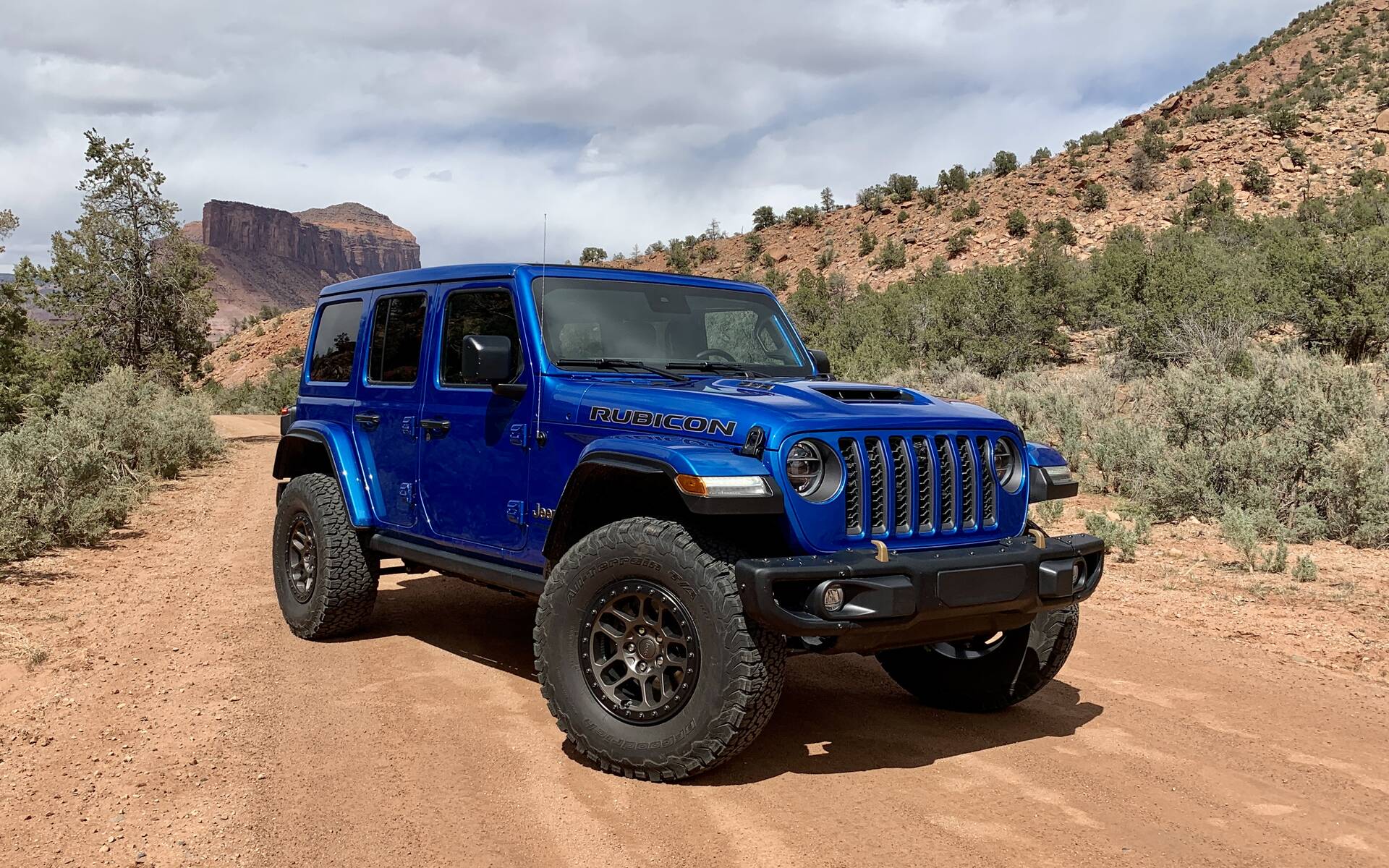
Trim Levels and Features: What to Look For
The 6-cylinder Grand Cherokee is available across numerous trim levels, each offering a different set of features and amenities.
- Laredo: The base model, still well-equipped with essentials like cloth seats, Uconnect infotainment, and basic safety features. A solid choice for budget-conscious buyers.
- Limited: A popular mid-range trim, adding features like leather seats, heated front seats, power liftgate, and upgraded Uconnect.
- Overland/Summit: Luxury-oriented trims with premium leather, panoramic sunroof, advanced safety features, air suspension (Quadra-Lift), and refined interior accents.
- Trailhawk (WK2): For those seeking more off-road prowess, the Trailhawk offers unique styling, improved ground clearance, skid plates, Quadra-Drive II 4×4 system, and all-terrain tires.
- Altitude/High Altitude: Often feature blacked-out exterior accents, unique wheels, and specific interior touches for a sportier appearance.
Consider your priorities: Do you need advanced safety tech, luxury features, or off-road capability? Match the trim level to your lifestyle and budget.
Financing and Insuring Your Grand Cherokee
- Financing: Secure pre-approval for a loan before you shop. This gives you negotiating power and clarity on your budget. Factors like your credit score, down payment, and the vehicle’s age/mileage will affect your interest rate.
- Insurance: SUV insurance costs can vary. Obtain quotes from several providers using the specific VIN of the vehicle you are considering. Factors like your driving record, location, and the vehicle’s safety features will influence premiums.
Tips for a Successful Purchase
- Do Your Homework: Research specific model years and their known issues.
- Set a Realistic Budget: Include not just the purchase price, but also potential immediate maintenance, registration, and insurance.
- Be Patient: The right Grand Cherokee might not be the first one you see.
- Negotiate Confidently: Use market data (e.g., Kelley Blue Book, Edmunds) and the PPI report to support your offer.
- Don’t Skip the PPI: This is the best money you’ll spend in the buying process.
Price Table: Estimated Jeep Grand Cherokee 6 Cylinder For Sale Values
Please note that these are estimated price ranges in USD and can vary significantly based on condition, mileage, specific trim level, options, geographic location, and current market demand.
| Generation | Model Years | Engine (V6) | Typical Trim Levels | Estimated Price Range (USD) | Key Features / Notes |
|---|---|---|---|---|---|
| WJ | 1999-2004 | 4.0L Inline-6 | Laredo, Limited | $3,000 – $8,000 | Legendary reliability, robust for off-roading. Older tech, higher mileage common. |
| WK | 2005-2010 | 3.7L PowerTech V6 | Laredo, Limited, Overland | $5,000 – $12,000 | More modern styling than WJ. 3.7L less powerful than later Pentastar. |
| WK2 | 2011-2016 | 3.6L Pentastar V6 | Laredo, Limited, Overland, Summit | $9,000 – $22,000 | First years of the popular Pentastar. 2014+ models have 8-speed auto and improved Uconnect. |
| WK2 | 2017-2021 | 3.6L Pentastar V6 | Laredo, Limited, Trailhawk, Altitude, Summit | $18,000 – $35,000 | Refreshed styling, updated infotainment, advanced safety features more common. Excellent value. |
| WL | 2022-Present | 3.6L Pentastar V6 | Laredo, Limited, Overland, Summit, L (3-row) | $30,000 – $55,000+ | Latest generation, most advanced tech, premium interior. Grand Cherokee L (3-row) available. Higher end of the market. |
Disclaimer: Prices are highly variable. Always conduct your own market research and obtain a Pre-Purchase Inspection (PPI) for an accurate assessment of a specific vehicle’s value and condition.
Frequently Asked Questions (FAQ)
Q1: Is the 6-cylinder Grand Cherokee powerful enough for everyday driving and occasional towing?
A1: Absolutely. The 3.6L Pentastar V6, especially, offers more than sufficient power for daily commuting, highway cruising, and even light to moderate towing (typically up to 6,200 lbs) for boats, ATVs, or small campers. It’s not a performance engine like the V8s, but it’s very capable.
Q2: What’s the best year for a used V6 Grand Cherokee?
A2: For the best balance of modern features, reliability, and value, the WK2 generation (2011-2021) is highly recommended. Specifically, models from 2014 onwards benefit from the 8-speed automatic transmission and updated Uconnect infotainment systems. Later years (2017+) offer further refinements and more standard safety features.
Q3: What kind of fuel economy can I expect from a 6-cylinder Grand Cherokee?
A3: For WK2 and WL models with the 3.6L Pentastar V6, you can generally expect around 18-20 MPG combined (19 city / 26 highway for 2WD, slightly less for 4×4). Older generations (WJ, WK) will typically yield lower figures.
Q4: Are there any common issues I should be aware of with the 3.6L Pentastar V6?
A4: The most commonly reported issues are oil filter housing leaks and, for very early WK2 models (2011-2013), potential cylinder head issues (though many were repaired under warranty). Thermostat housing leaks are also known. A pre-purchase inspection can help identify if these have been addressed or are present.
Q5: Should I get a pre-purchase inspection (PPI) before buying?
A5: Yes, without a doubt. A PPI by an independent mechanic is crucial for identifying hidden issues, assessing the vehicle’s true condition, and negotiating a fair price. It’s an investment that can save you significant money and headaches down the road.
Q6: What’s the difference between Quadra-Trac I, Quadra-Trac II, and Quadra-Drive II 4×4 systems?
A6:
- Quadra-Trac I: A full-time 4×4 system with a single-speed transfer case. It’s always engaged and requires no driver input, suitable for light snow or gravel.
- Quadra-Trac II: Adds a two-speed transfer case with a low range for more challenging off-road situations. It can transfer up to 100% of torque to the axle with the most grip.
- Quadra-Drive II: The most advanced system, building on Quadra-Trac II by adding electronic limited-slip differentials (ELSDs) at both the front and rear axles. This provides superior traction in extreme off-road conditions by actively sending power to individual wheels with traction.
Conclusion
The Jeep Grand Cherokee with a 6-cylinder engine offers a compelling package for a wide range of drivers. Its blend of performance, efficiency, rugged appeal, and family-friendly versatility makes it a standout choice in the used SUV market. By understanding the different generations, knowing what to look for during an inspection, and leveraging practical buying tips, you can confidently navigate the "Jeep Grand Cherokee 6 Cylinder For Sale" landscape. With careful research and a thorough pre-purchase inspection, you’ll be well on your way to enjoying the rewarding experience of owning this iconic American SUV.
